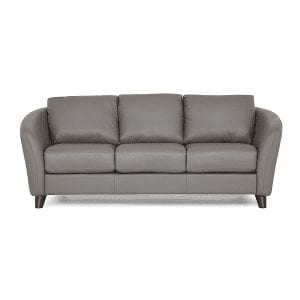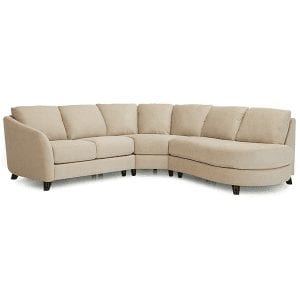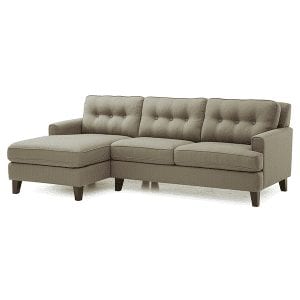Are you ready to refurbish that antique dresser? Want to freshen up your dining room table? Need to match an old bookshelf to the new living room furniture you just bought? If that sounds like you, read on.
Knowing how to paint wood furniture is one of the best DIY skills anyone can learn. A fresh coat of paint lets you inject an instant splash of color to any room in the house. It’s a great way to conceal minor damage to an otherwise functional item. Above all, it lets you add a personal touch to your décor.
If you’ve never painted furniture before, don’t fear! The key is to plan ahead and have all the necessary supplies on–hand before you open that first can of paint.
Furniture Painting Supplies
Painting furniture takes more than just a can of paint and a brush. Here’s everything you’ll need before you get started:
- Drop cloth
- Screwdriver
- Plastic bag or bin
- Palm sander and/or sandpaper
- Tack cloth or damp cloth
- Primer
- Paint
- Paint brushes
- Sealant
Choosing a Primer
Match your painting supplies to the type of wood you’ll be painting and the paint you’re using. A good rule of thumb is to use a water-based primer if you’ll be using a water-based paint, or a varnish-based primer with varnish-based paint.
If you’re working with unstained wood, choose a high–quality oil or latex primer. If the item is already stained, look for a stain blocking primer. Use an oil-based primer for painting over exposed wood or chipped paint.
Choosing Paint
Think about the color and finish you want when choosing paint for wood furniture. A matte finish creates a softer look, while an eggshell or satin finish exudes a more classic style.
- Chalk paint is the most common for wood furniture. It leaves a luxurious feel and is ideal for creating a distressed or vintage look.
- Mineral paint contains mineral pigments combined with a binder such as acrylic resin. Consider this option if you need a waterproof finish.
- Milk paint creates a smooth, flat finish with no visible brush strokes. It is excellent for achieving a modern, minimalist look.
Other options include all-in-one products that combine paint with a sealer, and eco-friendly brands that minimize exposure to harmful fumes.
Brushes for Painting Furniture
You’ll want to match your paint brush to the type of paint you’re using and your desired finish.
- Smooth-bristled flat brushes help you achieve a smooth finish, while a smaller angled brush helps you reach corners and crevices.
- Synthetic bristles work well with latex paints.
- Natural bristles should be paired with oil-based paints.
Getting Prepared to Paint
Once you’ve assembled all your supplies, remove any hardware such as drawer pulls, latches or screws, and place them in a plastic bag or bin for safe keeping. Take out any drawers and paint them separately. Put down a drop cloth or tarp to protect the ground or floor.
Sanding
Although it may be the most tedious part of the job, sanding before you paint is essential for creating a smooth surface for an even, professional-looking finish. If you skip this step, you’re more likely to end up with a rough finish. Paint may gather in scrapes or scratches on the surface of the wood, and it may be more prone to peeling.
It’s a good idea to wear a dust mask while sanding to avoid inhaling wood dust particles.
What Type of Sandpaper Do You Need?
When choosing sandpaper, start with a low grit and work your way up – from 80 to 120 and then 220. The lower the grit number, the rougher the texture will feel.
To remove an existing layer of paint, use a coarse sandpaper of around 80 grit. For removing an existing finish, use 220 grit and wipe clean with a moist cloth. For rough surfaces, use a 180 grit then move up to 220, wiping down with a damp cloth in between.
Wipe Down When Sanding
Always wipe down your surface when sanding wood. This ensures a smooth surface free of debris before you start applying primer and paint. Use either a tack cloth or damp cloth to make sure even the tiniest debris are removed. Let the surface dry completely before moving on to the next step.
Apply a Primer
Always prime your furniture before you paint!
Why is this important?
For starters, priming helps the paint adhere to the furniture for a more durable finish. In addition, the paint will go on more evenly. If you’re using a paint that has the primer included, be sure to sand and wipe down the surface before applying.
Brush in the direction of the grain and be sure to let the surface dry completely. After it dries, lightly sand the surface with 220 grit and clean away all dust. Apply a second coat of primer if desired, sand and wipe clean.
Paint
To begin painting, dip your brush into the paint and wipe off the excess. Apply a thin layer using a larger brush for flat, even surfaces. Use a smaller brush to paint between crevices and intricate details.
Refer to the instructions on the can for how long to wait between coats of paint. Allow the first coat of paint to dry completely before applying the second coat. For an extra smooth finish, you may wish to sand with 220 grit and clean with tack cloth before applying the second coat.
Pay attention to the quality of your paint and brush strokes to avoid unsightly streaking. If you are using milk paint, brush in the direction of the grain. With chalk or mineral paint, apply in different directions to avoid conspicuous brush marks. Always allow the paint to dry completely between coats. If you apply the second coat too soon, you’re more likely to end up with a streaky, bubbly appearance.
Sealing
Sealing after you paint helps to prevent staining and water damage, so your furniture will retain its beauty longer. Choose a sealer that is compatible with your paint, such as oil-, wax- or water-based. Some milk paints are self-sealing and highly durable on their own. Chalk paints, on the other hand, require a wax or lacquer to guard against marking and scuffing.
A wax sealer may have to be reapplied from time to time as it may gradually wear off. You can also purchase sealers in your preferred sheen, including matte, satin or semi-gloss.
Extra Tips
Finally, here are a few extra hints to keep in mind for successful painting.
- Let your furniture dry completely before replacing hardware and drawers.
- Be mindful of “curing” time. Even after drying, it can take one to three weeks for paint to harden enough to resist scratching and other damage. Check the instructions on your paint can for the exact length of time. Wait until the curing process is finished before placing objects on top of a painted surface.
- When you paint matters! If you’re painting outdoors, wait for low humidity weather conditions. If you’re painting indoors, make sure the room is well-ventilated and wear a safety mask if needed to avoid breathing in paint fumes.
Last but not least, be patient! It may be tempting to rush the process, but it is absolutely essential that you allow one coat to dry before applying the next. And don’t apply thick coats of paint, as this could leave unsightly streaks or an uneven finish.
If you’re looking for beautifully crafted new furniture customized for your decor and your life, come visit Lifestyles Furniture. Our design experts will help you choose from our wide selection of quality home furnishings for every room in the house.
If you have questions, give us a call at 573-874-1550 or contact us online at any time.



